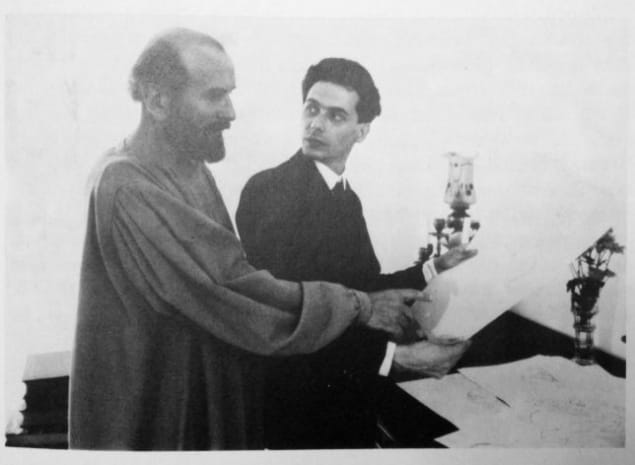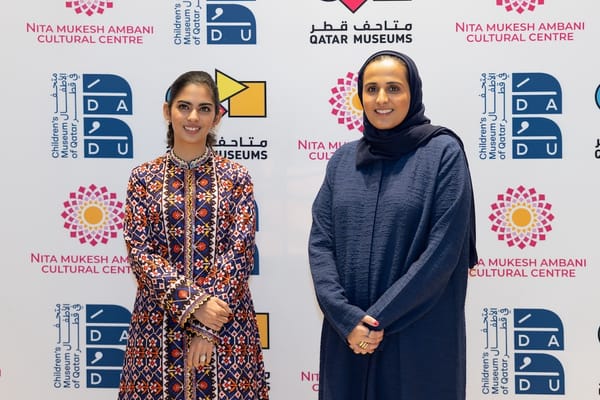The Relationship Between Gustav Klimt and Egon Schiele: A Pioneering Fusion of Mentor and Protégé
The relationship between Gustav Klimt and Egon Schiele exemplifies the transformative power of mentorship and mutual inspiration, significantly shaping Viennese modernism through their shared commitment to pushing artistic boundaries and exploring the complexities of the human condition.

In the realm of early 20th-century art, the relationship between Gustav Klimt and Egon Schiele stands as a poignant example of how mentorship and mutual inspiration can propel the evolution of artistic expression. These two Austrian painters, while distinct in their styles and approaches, shared a bond that was both personal and professional. Their relationship, marked by admiration, guidance, and a shared vision of pushing the boundaries of art, played a crucial role in the development of Viennese modernism.
Gustav Klimt: The Established Master
Gustav Klimt, born in 1862, emerged as one of the most prominent figures in the Vienna Secession movement, which sought to break away from the conservative constraints of academic art. Klimt's work is renowned for its symbolic complexity, opulent use of gold leaf, and intricate patterns. His most famous works, such as "The Kiss" and "Portrait of Adele Bloch-Bauer I," are celebrated for their sensual beauty and decorative richness.
Klimt's art was a reflection of the dynamic cultural milieu of Vienna, a city at the crossroads of tradition and modernity. His approach to painting was characterized by a meticulous attention to detail and an embrace of themes that explored the human psyche, sexuality, and the mysteries of life and death. By the early 1900s, Klimt had established himself as a central figure in the Viennese art scene, garnering both acclaim and controversy for his provocative works.
Egon Schiele: The Young Rebel
Egon Schiele, born in 1890, was a prodigious talent who would become one of the most significant expressionist painters of his time. Schiele's work is known for its raw emotional intensity, stark compositions, and often unsettling depictions of the human form. His self-portraits, in particular, reveal a relentless exploration of his own psyche, characterized by an almost visceral vulnerability.
Schiele grew up in the small town of Tulln, Austria, before moving to Vienna to study at the Academy of Fine Arts. His early work showed promise but also a restlessness with traditional techniques and subjects. It was in Vienna that Schiele first encountered the works of Gustav Klimt, whose bold use of color and innovative compositions made a profound impression on the young artist.
The Meeting of Minds
The exact details of Klimt and Schiele's first meeting remain somewhat obscure, but it is generally believed that they were introduced in 1907. Klimt, who was already an established artist, recognized Schiele's raw talent and potential. Despite their differences in age—Klimt was 28 years older—the two artists formed a close bond, characterized by mutual respect and a shared commitment to pushing the boundaries of art.
Klimt's influence on Schiele was immediate and profound. He introduced Schiele to key figures in the Viennese art world, provided him with financial support, and even modeled for some of his early works. Klimt's encouragement and endorsement helped Schiele gain recognition and commissions, which were crucial for his development as an artist.
Stylistic and Thematic Intersections
While Klimt and Schiele's works are stylistically distinct, there are notable intersections in their approaches and themes. Klimt's use of eroticism, his fascination with the female form, and his exploration of psychological depth resonated deeply with Schiele. However, where Klimt's work often celebrated the beauty and sensuality of his subjects, Schiele's art delved into darker, more existential realms.
Klimt's influence is evident in Schiele's early works, where he adopted Klimt's decorative style and elaborate patterns. However, Schiele soon began to develop his own distinctive approach, characterized by bold, angular lines, and a more expressionistic use of color and form. His portraits and self-portraits, often marked by contorted poses and intense gazes, reflect a psychological depth and intensity that set him apart from his mentor.
One of the most striking examples of their thematic overlap is their treatment of the human body. Both artists were fascinated by the complexities of human anatomy and used the body as a vehicle for exploring deeper emotional and psychological states. However, while Klimt's nudes often exude a languid sensuality, Schiele's figures are tense, almost tortured, reflecting his preoccupation with the fragility and impermanence of life.
The Mentor and the Protégé
Klimt's mentorship of Schiele went beyond mere artistic guidance. He provided Schiele with access to his extensive network of patrons and collectors, helping to establish his reputation in the art world. Klimt's support was instrumental in securing exhibitions and sales for Schiele, who, despite his prodigious talent, struggled with financial instability throughout his short life.
Their personal relationship was also marked by a deep mutual respect. Klimt admired Schiele's fearless exploration of new artistic territories, while Schiele looked up to Klimt as a master who had successfully navigated the complexities of the art world. Despite their differences in temperament and style, the bond between Klimt and Schiele was one of genuine affection and admiration.
Diverging Paths
Despite their close relationship, Klimt and Schiele's artistic paths eventually diverged. Klimt continued to refine his decorative style, producing some of his most iconic works in the years leading up to his death in 1918. Schiele, on the other hand, moved further into the realm of expressionism, creating works that were increasingly raw and introspective.
Schiele's later works, such as "The Family" and "Death and the Maiden," reflect a maturity and depth that hint at his potential for even greater artistic achievements. Tragically, Schiele's life was cut short by the Spanish flu pandemic in 1918, just months after Klimt's death. Despite his brief career, Schiele left behind a body of work that continues to resonate with its emotional power and innovative approach to form and composition.
Legacy and Influence
The relationship between Gustav Klimt and Egon Schiele is a testament to the transformative power of mentorship and the enduring impact of artistic collaboration. Klimt's guidance and support were crucial in shaping Schiele's early career, while Schiele's fearless exploration of new artistic frontiers inspired Klimt to continue pushing the boundaries of his own work.
Their legacy can be seen in the continued influence of their art on subsequent generations of artists. Klimt's decorative style and symbolic complexity have inspired countless artists, while Schiele's raw emotional intensity and innovative use of form have left an indelible mark on the world of expressionism.
In Vienna, their works are celebrated as central to the city's rich artistic heritage. The Belvedere Museum and the Leopold Museum house some of the most significant collections of Klimt and Schiele's works, offering visitors a chance to explore the dynamic interplay between these two towering figures of modern art.
Conclusion
The relationship between Gustav Klimt and Egon Schiele is a powerful example of how mentorship and mutual inspiration can drive artistic innovation. Their bond, marked by admiration, guidance, and a shared commitment to exploring the depths of human experience, resulted in a body of work that continues to captivate and inspire audiences around the world. Through their art, Klimt and Schiele invite us to look beyond the surface and explore the complexities of the human condition, reminding us of the enduring power of creative collaboration.





